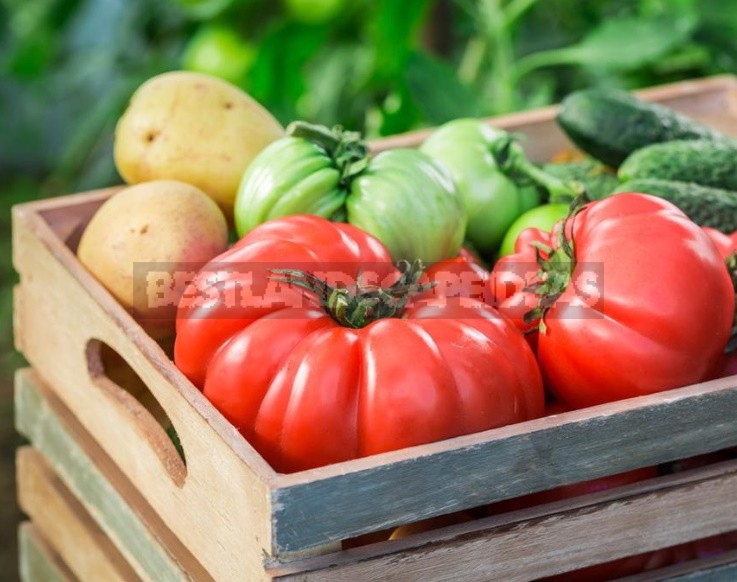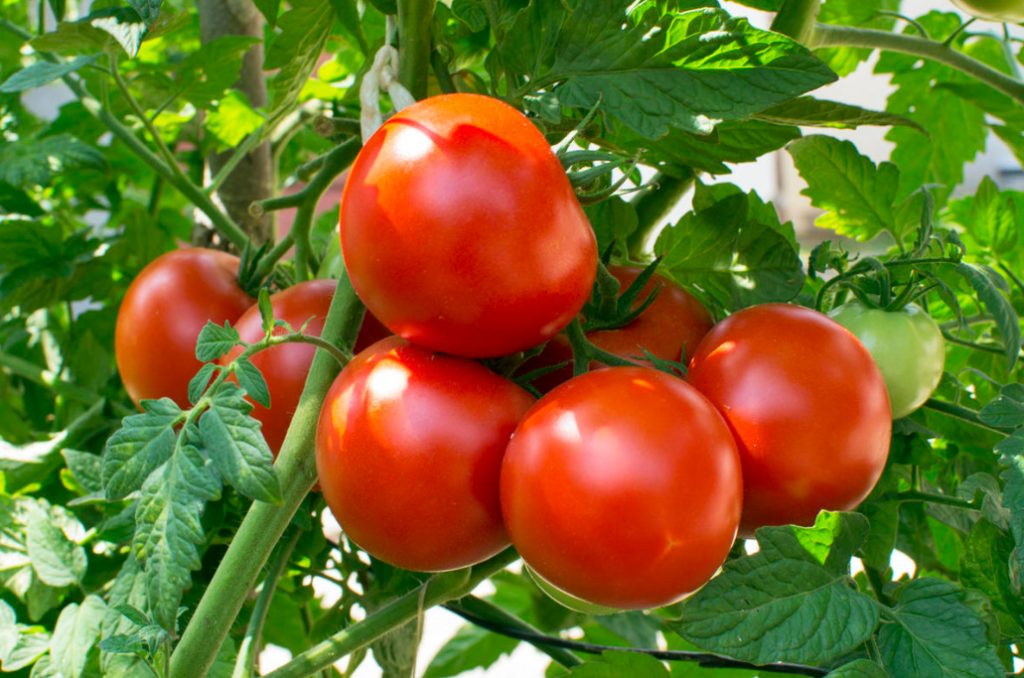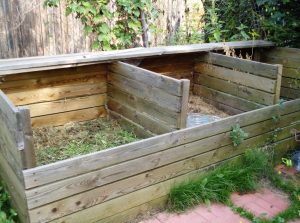At different stages of development, the tomato needs completely different elements of nutrition. We will tell you in this article how to understand what a plant needs and meet its needs in time.
Tomatoes during the season form a large vegetative mass and consume a lot of nutrients, so the introduction of fertilizing during the growing season should be carefully planned. The plant needs basic fertilization when preparing the soil, sowing and planting, as well as regular fertilizing after planting. Tomato is demanding to the content of macronutrients (nitrogen, phosphorus, potassium, magnesium) and trace elements (boron, manganese, zinc, molybdenum) in the soil. At the initial stages of growth, seedlings consume very few elements of nutrition, but as they develop, their demands grow, reaching a peak at the time of fruiting.
Nitrogen and phosphorus
During growth, tomato seedlings actively consume nitrogen and phosphorus. Nitrogen helps to form a larger leaf surface, and phosphorus stimulates the production of an earlier crop. Nitrogen is intensely absorbed throughout the entire period of tomato growth, but it does not occur evenly. For the first month, the seedling takes up to 12% of the total demand for the entire season. And the peak consumption of this element is at the beginning of fruiting.

Phosphorus is consumed in the same way as nitrogen: up to 13% is consumed from germination to budding, and about 80% is consumed by the time of fruiting. Tomato needs about three times less phosphorus than nitrogen. With the beginning of fruit maturation, the consumption of these elements decreases.
Potassium
With potassium, the tomato has a slightly different relationship, not the same as with nitrogen and phosphorus. Before the beginning of flowering, the plant consumes only 3-5% of the entire norm of this macronutrient. But starting with fruit formation, the need for potassium increases sharply — and reaches a maximum by the time of fruit maturation. Tomato needs it almost twice as much as nitrogen, and 5-6 times more than phosphorus.

Some tips
The combination of proper soil preparation, nutrition, care, and optimal growing conditions contributes to increased resistance to diseases and pests, which means that a high yield is obtained.
1. Good precursors for tomatoes — early cabbage, cucumbers, legumes. It is not recommended to grow tomatoes, potatoes, peppers, and eggplants after that due to the pathogens that persist in the soil for 2-3 years. The optimal value of soil acidity for growing tomatoes is pH 5.5.
2. Before planting seedlings, 20-25 g/m2 of potassium, 20-50 g/m2 of phosphorus and 8-10 g/m2 of nitrogen, as well as 10-15 kg/m2 of rotted manure, are added to the soil. When choosing complex mineral fertilizers preference should be given to products with a ratio of nutrition elements N:P:K 1:2:2.
3. After transplanting is carried out 3-4 top dressing potassium fertilizers at the rate of 8-10 g/m2. Nitrogen fertilizing is carried out 30 days after planting. Then the plants are fertilized, focusing on their condition. If there is a lack of magnesium, tomatoes are sprayed with a 0.5% solution of magnesium sulfate. Characteristic signs of deficiency of this macronutrient: the lower leaves are twisted, between the veins appear chlorosis and necrosis spots.

4. Fertilizers with trace elements (boron, manganese, zinc, molybdenum) should be applied before sowing or planting the crop. When applied in autumn, trace elements are easily washed out of the soil. Such fertilizers should be used for pre-sowing treatment of seeds or in the form of foliar fertilizing of plants.
5. During foliar feeding the batteries fall on the leaves — and included in the faster metabolism. Food elements do not come into contact with the soil, are not absorbed by it and are easily absorbed by plants. At low positive temperatures, the effectiveness of such feedings increases: phosphorus is thus absorbed 15 times more effectively than from root feedings. Nitrogen fertilizing on the leaf reduces the content of nitrates and increases the protein content in the fruit.

Additional fertilizing is needed at all stages of plant development from seed to harvest. Knowing the basic principles of nutrition, you can build an effective feeding scheme for your tomatoes and get a rich and healthy harvest.






